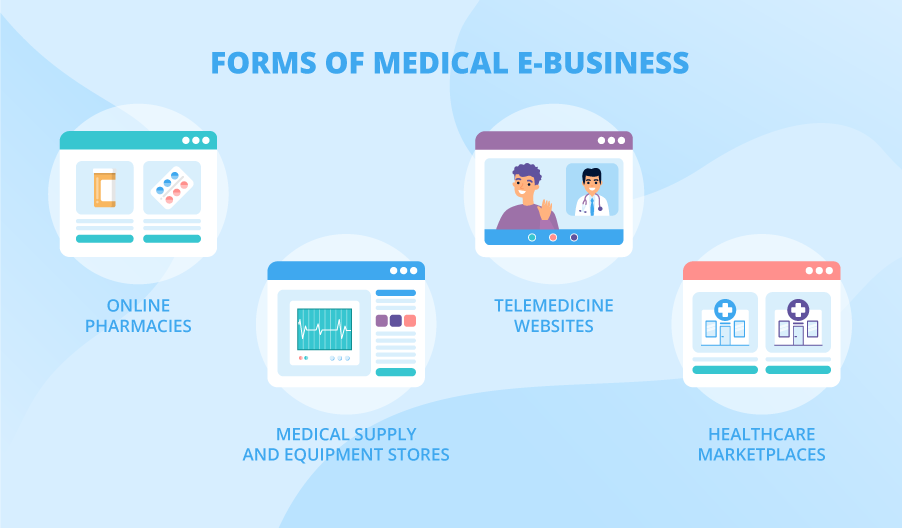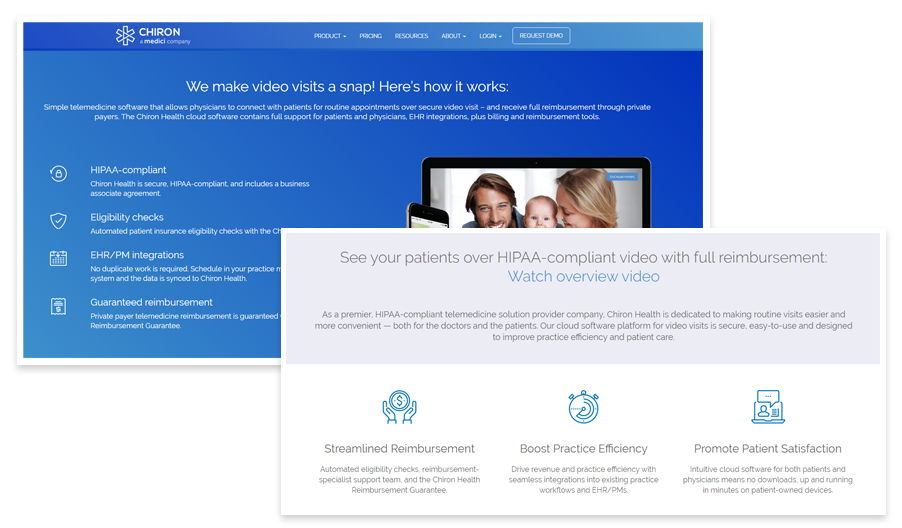4 Faces of Healthcare Ecommerce and Common Challenges Medical E-Business Shares
Editor’s note: To introduce you to the domain of healthcare ecommerce, Peter outlines 4 major types of medical e-business and explains how they can avoid the common challenges of the digital presence. If your interest in the topic is not purely theoretical, we are also glad to offer our ecommerce consulting assistance.
Healthcare has been making a headway over the last years, but I must say, the way medical products and treatment are delivered has advanced significantly too. At ScienceSoft, we increasingly work with healthcare companies going digital to grab the benefits of:
- An expanded service area.
- A possibility to deliver necessary treatment to home-bound patients.
- A direct-to-consumer sales channel.
- Higher engagement of people who search for health-related information online (80% of respondents to the healthcare CX survey conducted by Doctor.com).
- Increased privacy protection.
The transition into digital presence is not always smooth though. Today, I want to deal with common challenges all types of healthcare e-business face by invoking the experience of my team in managing them. But first things first.
4 forms of medical e-business: peculiarities and real examples

Online pharmacies
If you are planning an online pharmacy, you have a range of your own challenges to face. Yet, my first words of advice – make the accreditation by NABP, National Association of Boards of Pharmacy, your number-one priority and put the badge on your website later. I assume that the trust to online pharmacies is seriously challenged by the number of illegal players who sell unapproved new drugs and release medicines without a valid prescription. And people are naturally apprehensive about everything that may potentially be health-threatening.
To sell medicines online, you need a custom ecommerce website integrated with a hub of your clients’ medical data. As an example, check PillPack – this company helps people manage ongoing treatment and chronic diseases by delivering 14-day supplies of medications divided into daily packets.

Medical supply and equipment stores
This type is most similar to the traditional ecommerce business as it implies selling tangible non-prescription-based goods – medical consumables and devices – both to healthcare institutions and at-home individuals. When designing e-medical ecommerce solutions for such a mixed target audience, our team always considers the possibility of packing a website with B2C and B2B features alike. For example, individual clients likely need strong guidance for an informed choice, which makes the integration of several customer support tools a must. Corporate buyers, however, usually have an approved list of supplies to order but expect dynamic pricing depending on their order volume.

Telemedicine websites
Modern technologies don’t only allow for sale-and-buy transactions but bring doctor-patient interactions online too. I see that telemedicine responds to the changes in how people take care of their health – moving from treatment to prevention and early diagnosis. Of course, getting an online medical consultation is no substitute for a medical examination, but it allows capturing the need for an in-person visit timely. We have a comprehensive guide to telemedicine app development where my colleague Anastasia Yaskevich shares her 5-year experience of researching telehealth progress and the insights drawn from ScienceSoft’s practice (for example, the article features one of our projects – a HIPAA-compliant Android version of the Chiron Health platform). Anastasia shares the value telemedicine brings:
Telehealth apps create a better schedule for healthcare professionals, save the time of the 75% of patients who do not need a physical examination, as well as give better access to healthcare for the people who live in underserved rural areas.

Healthcare marketplaces
On a medical marketplace website, people can compare prices and choose the best option among the offerings of different healthcare providers, both for products and services. By the way, an advertising presence on marketplaces is an excellent opportunity to catch an online audience for healthcare centers with no digital space of their own.

Challenges common in healthcare ecommerce
Despite the multi-faced business landscape in healthcare ecommerce, I see from the experience of our healthcare clients three common challenges to meet. And though the solutions will bear certain specifics for each business, I can set the strategic direction for you now.
#1 Larger involvement of seniors
Today, digital commerce adoption among the elderly remains rather limited as they tend to lack trust in technologies or feel unmotivated to use them. As a result, it’s challenging to engage seniors in healthcare ecommerce. However, I love exploring new target audiences (working through their fears, preferred communication channels, incentives, etc.) and will be happy to help you with my ideas on how to get more seniors online.
Building awareness as the first step of customer acquisition:
- Use non-digital marketing channels. If you want to interact with seniors directly, meet them offline with printed marketing materials (e.g., booklets) where you introduce your company and new opportunities it represents, explain how to access the website and offer remote assistance with the first experience.
- Take a fresh look at influencer opportunities. As the elderly may do less self-research and trust more the recommendations of their loved ones, you can target their family members via a variety of marketing channels. Explain to them what modern ways of healthcare delivery exist and how they can facilitate the lives of their parents and grandparents, ask for their assistance in driving interest and adoption of technologies.
Tuning user experience to reduce the anxiety of senior users. Here are some best practices we at ScienceSoft keep in mind when designing healthcare websites:
- Preferably on the homepage, walk your users through the end-to-end experience: the steps, the information they need to submit, payment and delivery conditions.
- At each step of a user journey, add clear explanations and ensure all actions are undoable to eliminate users’ frustration upon an incorrect action.
- Don’t sacrifice usability for aesthetics.
- Arrange for usability testing before bringing the website to real users.
#2 Proper user experience on the go
People often use their mobile phones to search for medical products and services right during or after their visits to healthcare institutions. Therefore, I always advocate a mobile-first approach to healthcare ecommerce development. It allows focusing on how mobile users will interact with the website and make sure that all the steps of a user journey are perfectly convenient to perform on mobile.
As an alternative variant, I suggest considering a PWA solution as it provides for a seamless purchasing experience regardless of the network quality and fast loading for mobile users. To restock easily, they can install an icon and access the website from their home screen with no need to download one more mobile app or opening a web browser.
#3 Enhanced data security
According to the HIPAA Security Rule, healthcare ecommerce companies must comply with a set of security standards to provide for proper technical, administrative and physical safeguards of protected health information (PHI). For your security literacy, I give the safety rules to instill.
Technical safeguards:
- Data encryption.
- Protected access to network resources.
- Regular security audits.
- Penetration testing to secure infrastructure immunity.
Administrative safeguards:
- Workforce security training.
- Information access management.
Physical safeguards:
- Authorized facility access.
Choose a reliable technology team to bring your business online
If you are determined to bring your healthcare business online, soon you will be looking for a team of ecommerce developers to fulfil the task. Choose those who are no strangers to healthcare to guide you proactively through subtle business needs and challenges. Do you have an ecommerce initiative in mind? You are very welcome to engage us at any stage!
